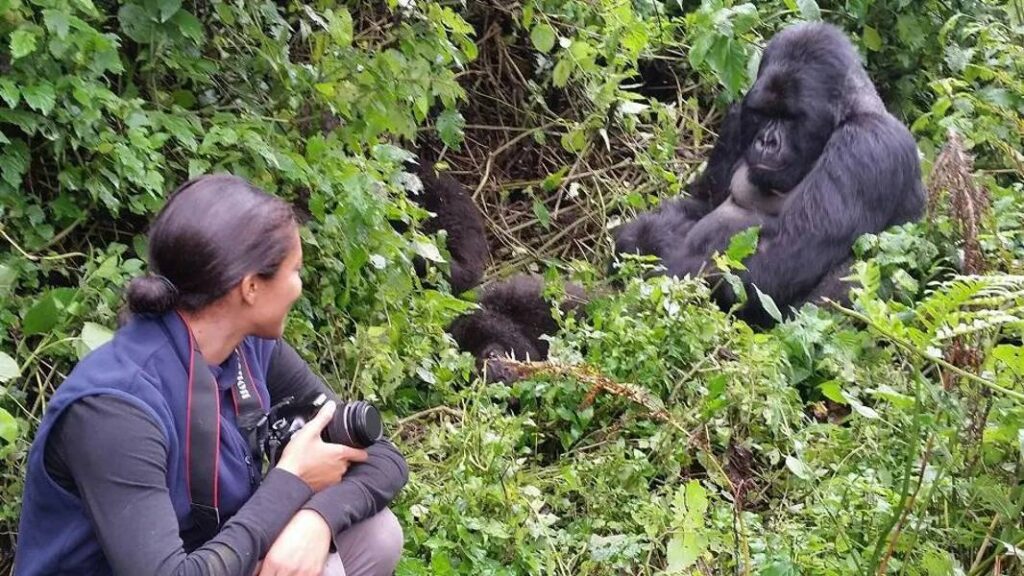How hard is mountain gorilla trekking?
How hard is mountain gorilla trekking? This is a question that many people have before deciding whether or not to go gorilla trekking. Because it involves traveling large distances for hours in search of the gorillas, mountain gorilla trekking is an exciting and daring activity that calls for a decent level of fitness. The action is thought to take six to nine hours, and if one is not physically fit enough, this period of time can be quite taxing.
Every mountain gorilla trekking park has unique challenges. For instance, Bwindi National Park is primarily an impenetrable forest with rivers and streams. Higher elevation, mist, and bamboo forests are all common features of Mgahinga National Park.

In any of the parks, trekkers must also contend with insects and erratic rainfall. It’s crucial to remember that no permanent trail signs were taken during the hike. This is due to the fact that it is difficult to forecast where the gorillas slept soundly. Because the air becomes thinner and the strain on the lungs increases with altitude, some people may experience altitude sickness when traveling at high elevations of 2500 to 3000 meters.
In order to reduce the effects of altitude and the overall difficulty of the trekking activity by the time of your trip, it is best to begin exercising well in advance of your journey. The majority of hikers reserve their permits roughly six months in advance, which is just enough time to adjust your level of fitness. Prior to your gorilla expedition, exercises like stretching, which helps to minimize needless injuries, walking, and hiking will work like magic.
However, your level of fitness shouldn’t stop you from going gorilla trekking. Porters, sedan chairs, and hiking sticks are available in the gorilla trekking parks. While the sedan chairs and porters cost roughly $500, the trekking sticks are provided free of charge at the start of the journey. If you are elderly or unfit, arrangements can also be arranged for you to have a shorter and simpler journey. If such arrangements are to be made, reservations must be made well in advance.
To ensure a memorable and less exhausting tour, prepare thoroughly. Pack a long-sleeved shirt, pants, bug repellents, hiking boots, a hiking stick if you have one, sunglasses and a hat for the sun, a rain jacket in case of sudden downpours, a food for a longer hike, and water in a bottle to stay hydrated and refreshed. It is also helpful to reserve lodging close to the trekking area. The energy you would have needed to drive or walk to the trekking park to begin the actual hiking will be saved.
Another option is to go gorilla trekking during the dry season, when the terrain is much less muddy and simpler to traverse. However, since the dry season is the busiest (July to September and December to February), you will need to reserve your permit six to twelve months before your trip.
The beauty
Despite the challenges it poses, gorilla trekking is an incredible and unforgettable experience that everyone ought to consider. In addition to witnessing the gorillas, you will also observe birds and the breathtaking landscape of the parks, including the different types of forest animals and other primates like red-tailed monkeys.
Gorilla trekking is made easy and the effort is worthwhile when you are well-prepared. One of the most remarkable aspects of the experience is the terrain itself, which can be challenging to navigate at times.



